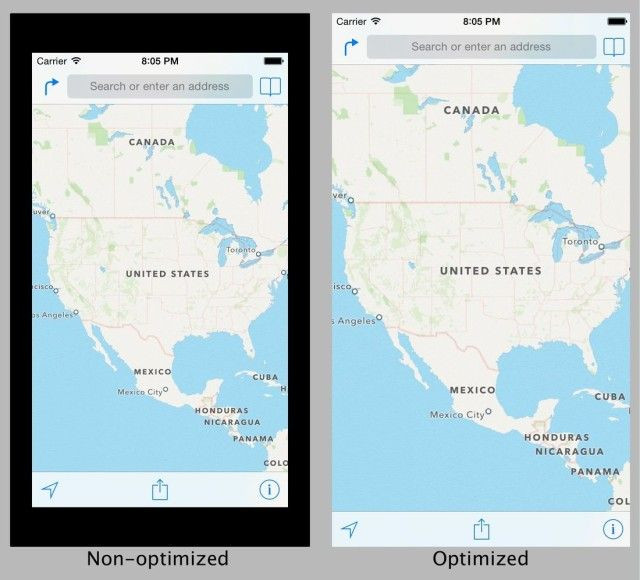Apple iPhone 6 Rumors: Why A Larger iPhone Makes Sense For Customers And Apple

Apple rumors run the gamut from exacting to ridiculous, and the iPhone 6 is not immune from this trend. Recently, rumors surrounding Apple’s next iPhone include the strange – a protruding camera or an iPhone stylus – and the not so strange. In the latter category, KGI Securities’ analyst Ming Chi-Kuo, who has a history of accurately predicting Apple products, released a note last week that speculated that the Cupertino, Calif.-based company’s next smartphone would boast a screen size of 4.7-inches, a 17.5 percent increase.
There is a lot of talk right now about how Apple will get there. Cult of Mac and Macrumors both spoke about how Apple could increase the screen size without forcing developers to change their apps completely.
Citing a report by reputable analyst Ming Chi Kuo that says the iPhone 6’s 4.7-inch display will boast a 1,334 x 750 pixel display, the theory is this: even though it will have a bigger screen, Apple will keep the iPhone 6’s resolution exactly the same as the iPhone 5.” – Cult of Mac
That means that all existing user interface elements, such as icons, would be the same size but would allow for more screen space.” – Macrumors
Basically, by adding more screen size, but not increasing or decreasing the pixel density, Apple can letterbox current apps on the sides until developers took advantage of the added space. This technique was used when the screen size on the iPhone 5 was increased to 4-inches, but the tops and bottoms were letterboxed.

But the better question is to ask why Apple is looking at increasing the size. Most likely it’s competition that is forcing Tim Cook’s hand.
Steve Jobs notoriously hated larger screens. In 2010, at the iPhone 4 press conference, Jobs joked that Apple could have made an iPhone so big “you can't get your hand around it,” but that “no one's going to buy that.” At the time android phones like the EVO 4G, Droid X and the Galaxy S, were in the 4-inch to 5-inch range. But Apple did eventually make a 4-inch iPhone, increasing it vertically to maintain the width. They even made a commercial touting it as “common sense.”
The iPhone 6 is speculated to come in two sizes, a 4.7-inch version and a 5.5-inch version. While the latter would be an interesting move, nothing of note has substantiated the rumors yet; although Kuo included the “iPhablet” in his note with a release date sometime in the fourth quarter. However, images of potential screens, case molds, and chassis dies for the 4.7-inch version have surfaced recently, which gives some weight, albeit potentially false weight, to the rumors.
Ultimately, the increase in size most likely comes as a response to flailing market shares for the iPhone and iPad. There is a trending feeling, perhaps because of convenience, perhaps because of necessity, that since smartphones are getting even more capable, there isn’t a need to have a redundancy device like a tablet. Hence the “phablet” market.
At Macworld 2014, Ben Bajarin of Creative Strategies gave one reason why the iPhone could go into the larger size. Bajarin postulated that a larger-screened iPhone 6 might do really well in emerging markets, where consumers only have a single device. He conceded that an iPhablet may not do well domestically, as the US market seemingly lacks interest in the phablet market. But with the wide success of Samsung’s Galaxy S4 or Google’s Nexus 5, both of which have a 5-inch screen, it would be foolish for Apple to ignore that market.
Additionally, a recent poll by ChangeWave Research, pegged interest in a larger and faster iPhone at and “unprecedented level.” When ChangeWave asked more than 4,100 people, mostly in North America, about their interest in the iPhone 6, 40 percent of respondents said they are “very likely” or “somewhat likely” to buy an iPhone with a “larger screen size” and a “faster processor.”
The major concern of Apple’s foray into larger screened iPhones seems to be about their how they might be carried around. “I'm 6'3" and would be fine with a bigger phone as long as it fits my pocket well and I can use it one-handed most of the time,” stated Reddit user PairOfMonocles2, when asked about a larger iPhone. However, Wired writer Christina Bonnington noted that Apple doesn’t need a larger iPhone, stating that she needs a phone to fit into her pocket as well as her hand.
Ultimately, the size of the iPhone 6 is still all speculation. While rumors will fly in the next six months leading up to the announcement, Apple will most likely sit on any information regarding size and specs. But the concept of a one-size-fits-all iPhone seems to be weakening in favor of the multiple options Android users get.
© Copyright IBTimes 2024. All rights reserved.





















